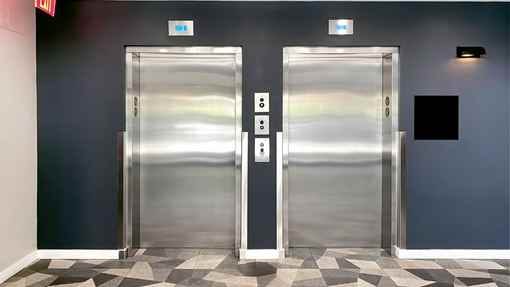Exploring the Globe of Elevators: Usual Problems Faced by Numerous Lift Mechanisms
As we navigate via the upright transport systems of contemporary structures, lifts stand out as an essential element of our day-to-day lives. From hydraulic elevators to traction systems and machine-room-less styles, each lift kind comes with its set of common problems.
Hydraulic Elevators
Hydraulic lifts, frequently favored for low-rise buildings, make use of fluid pressure to control the activity of the lift car (lift repair companies). This system involves a hydraulic pump pressing oil into a cyndrical tube, creating the elevator to relocate in the desired instructions. While hydraulic lifts are recognized for their smooth and silent procedure, they do come with their own set of common problems
One widespread trouble with hydraulic lifts is oil leakage. In addition, problems with the control system, such as defective valves or a malfunctioning pump, can cause disruptions in the lift's motion.
Routine maintenance and timely repairs are vital to guarantee the smooth functioning of hydraulic lifts. By dealing with these common concerns proactively, structure owners can reduce downtime and ensure the safety and security and effectiveness of their vertical transport system.
Grip Elevators
When taking into consideration upright transportation systems in structures, one more common kind apart from hydraulic elevators is the grip elevator. Traction lifts run utilizing a system of ropes and counterweights that move the lift cars and truck by gripping onto the hoist ropes. This system permits smoother and faster vertical transport compared to hydraulic systems.
One of the usual issues dealt with by traction lifts is rope wear. The consistent movement of the ropes within the grip system can cause deterioration over time, potentially creating the lift to malfunction or come to be dangerous for usage. Normal examinations and upkeep of the ropes are vital to make sure the elevator's appropriate performance and security.
One more concern that traction elevators may run into is connected to the control system. Troubles with the control system can lead to problems such as irregular activity, delays in reaction times, or even total closures. Regular testing and upkeep of the control system are essential to avoid such concerns and guarantee the lift's reliability.
Machine-Room-Less (MRL) Elevators

Among the crucial elements of MRL elevators is the portable gearless grip device that is set up within the hoistway. This device efficiently drives the elevator auto without the demand for bulky tools located in typical grip elevators. Additionally, MRL elevators commonly use a counterweight system to stabilize the automobile, further boosting their energy efficiency.
Regardless of their benefits, MRL elevators might encounter difficulties connected to maintenance and fixing because of the restricted room for equipment installation. Access for servicing parts within the shaft can be restricted, requiring specialized training for technicians. Proper upkeep routines and routine inspections are vital to ensure the continued smooth operation of MRL lifts.
Overloading and Weight Limitation Issues
Overloading and weight restriction concerns are important worries in elevator operations. Elevator manufacturers style lifts with details weight abilities to make certain traveler security and equipment longevity.
When lifts are overwhelmed, it puts too much pressure on the motor, cables, and various other elements, possibly causing breakdowns or failures. If they identify excess weight, safety devices such as sensors and overload sensing units are in place to protect against elevators from relocating. Additionally, going beyond weight limits can cause increased energy intake and deterioration on the elevator system.
To mitigate overwhelming problems, constructing managers ought to plainly display weight limitations in lifts and inform passengers on the significance of sticking to these restrictions - lift repair companies. Regular maintenance checks by qualified professionals can also help make certain that lifts are operating within risk-free weight criteria. By addressing overloading and weight limit concerns proactively, building proprietors can boost elevator security and effectiveness
Electric System Failings
Exceeding weight limits in elevators can not just lead to mechanical concerns yet likewise potentially contribute to electrical system failings within the lift framework. Electric system failures are a reference vital issue in elevator operation, as they can create unanticipated closures, malfunctions, or even safety hazards.
Furthermore, power surges or variations in the electric supply can likewise disrupt the lift's procedure, impacting its performance and continue reading this safety and security. These electric disruptions can damage sensitive lift elements such as control panels, motherboard, or sensing units, causing system failures. Regular upkeep and examinations are vital to recognize and resolve potential electric problems quickly, ensuring the reliable and secure procedure of elevator systems. By adhering to weight restrictions and performing routine electric system checks, structure proprietors can reduce the threat of electrical failings in elevators.
Verdict

Hydraulic elevators, commonly preferred for low-rise structures, make use of fluid pressure to regulate the motion of the elevator auto.When considering upright transportation systems in buildings, another typical type apart from hydraulic elevators is the traction elevator. Traction elevators run using a system of ropes and counterweights that relocate the lift automobile by gripping onto the hoist ropes. Unlike standard elevators that call for a different machine area to house the equipment, MRL lifts incorporate most of the components within the shaft, eliminating the demand for a specialized machine area.In final thought, lifts face common problems such as hydraulic malfunctions, traction system failures, and electrical system troubles.
 Jonathan Taylor Thomas Then & Now!
Jonathan Taylor Thomas Then & Now! Marla Sokoloff Then & Now!
Marla Sokoloff Then & Now! Christy Canyon Then & Now!
Christy Canyon Then & Now! Nicholle Tom Then & Now!
Nicholle Tom Then & Now! Ricky Schroder Then & Now!
Ricky Schroder Then & Now!